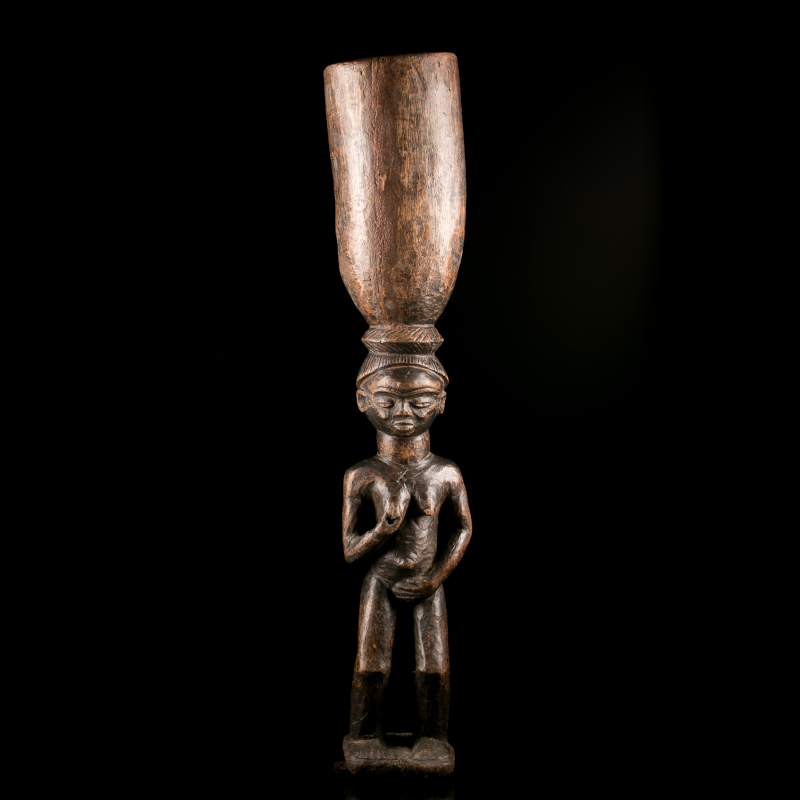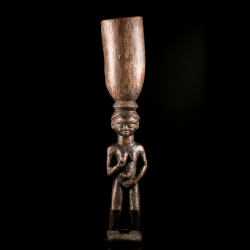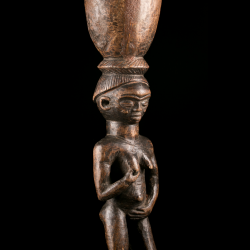











Kipende statues, also known as Pende statues, are traditional works of art from the Pende people of the Democratic Republic of Congo (DRC). These statues are particularly distinctive and are characterized by several unique elements, including a palm wine cup surmounting the heads of some of them. Let's explore these statues in detail, as well as the possible influence of a Wongo sculptor on the Pende at the time.
Form and Style:
Palm Wine Cup:
Influence of a Wongo Sculptor:
Possible Influence:
Kipende statues with a palm wine cup are fascinating examples of the art and culture of the Pende of the DRC. The possible influence of a Wongo sculptor on these works highlights the interconnectedness and cultural exchanges between the region's various communities. These statues are not only artistic objects but also witnesses to the history, spirituality, and social traditions of the Pende.
Data sheet

Kipende statues, also known as Pende statues, are traditional works of art from the Pende people of the Democratic Republic of Congo (DRC). These statues are particularly distinctive and are characterized by several unique elements, including a palm wine cup surmounting the heads of some of them. Let's explore these statues in detail, as well as the possible influence of a Wongo sculptor on the Pende at the time.
Form and Style:
Palm Wine Cup:
Influence of a Wongo Sculptor:
Possible Influence:
Kipende statues with a palm wine cup are fascinating examples of the art and culture of the Pende of the DRC. The possible influence of a Wongo sculptor on these works highlights the interconnectedness and cultural exchanges between the region's various communities. These statues are not only artistic objects but also witnesses to the history, spirituality, and social traditions of the Pende.
